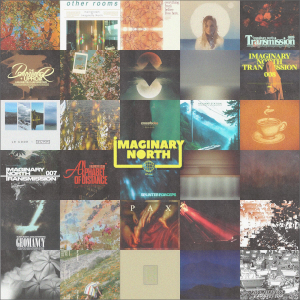Sometimes what comes in a flash unfolds over a long period of time. Such a flash came to Silent Records label founder Kim Cascone one winter night as a kid. “I remember sitting in a snowbank and looking up at the stars. I spotted the blue star in the Orion constellation and gazed at it for a long time. Suddenly I had a flash, like one of those speed-collages in a film where hundreds of events all race past in a split second. I call this ‘my download’ & have been unpacking its meaning ever since.”
Silent 1 ::
Sometimes what comes in a flash unfolds over a long period of time. Such a flash came to Silent Records label founder Kim Cascone one winter night as a kid. “I remember sitting in a snowbank and looking up at the stars. I spotted the blue star in the Orion constellation and gazed at it for a long time. Suddenly I had a flash, like one of those speed-collages in a film where hundreds of events all race past in a split second. I call this ‘my download’ & have been unpacking its meaning ever since.”
One of the ways he seems to have been unpacking it is in his work as musician and composer across various genres of electronic music from the 1980s through the present. The medium of Silent Records also seems to be part of his process for decanting his download and disseminating the work of kindred artists, siphoning music out of the aether and releasing it into sleeves of sound, physical and digital.
Silent is now in its second incarnation. The first incarnation had a slow beginning with the 1985 release of the album Silence from PGR. The music could be classed as industrial, and the name came from the sign they affixed to the door of their practice space: Poison Gas Research. That part of Oakland was as rough as the music they made there, and they didn’t want to attract the attention of “dubious people.”
The label didn’t have a name yet, but the following year saw him put out In the Shade of Fire by The Haters, the project of noise music legend GX Juppiter-Larsen, and the beginning of the use of the Silent Records name. These two early releases foreshadow the noisier end of things that Silent would start releasing again around 2017 through the present, yet noise and industrial were never the sole interests of Cascone. It wasn’t the only kind of material he wanted to make, or the only kind of material he wanted to put out into the culture.
All the same, there was a lot of energy in the world of DIY experimental music in the mid to late eighties and the issuing a split between Organum/Eddie Prevost followed in 1987. He was also active in the Colorado based Thessalonians and toured with them. The Architects Office LP was one result of this activity.
By that time Acid House was beginning to be a big thing. When the likes of Psychic TV got a hold of it, they cross fertilized that style of dance electronica with the lysergically-minded end of the industrial and experimental scenes.
Meanwhile in 1988, Cascone set Silent Records aside to do work in the film and television business, where he had the opportunity to work with David Lynch on Twin Peaks and Wild At Heart. Lynch’s own influence on industrial and alternative music culture can’t be underestimated, from the howling factories that formed the sound bed of Eraserhead, to his Industrial Symphony No. 1, and the electrical ambiences and sound of the wind in the trees, Lynch knew how to use sound and silence to create his distinctive vision of American surreality. Cascone met sound editor Jay Boekelheide, most famous for his work on The Right Stuff. The way Boekelheide was able to build up heavenly sounds for the industry became an inspiration to Cascone, and a direction to move his label into. Ambient infused musical explorations began to follow in 1990 as underground and popular culture shifted towards the energy of the rave.

Expanding the reach of electronic music ::
That’s really when Cascone started working on using Silent Records as a vehicle for expanding the reach of electronic music, amplified by his creation of the Pulse Soniq company so he could get the releases into record stores and other places where the music could find the others. Based out of San Francisco, one of North Americas epicenters of electronic dance music, Cascone was in the right place at the right time to infuse his vision into the neon glowing membranes of the enhanced collective consciousness finding its way in the techno era. He refined the label by adding three imprints that bear witness to his alchemical interests: Flask, Furnace, and Sulphur.
Flask offered, “Flask is acid, electronica and ambient. This sub-label offers music that is closely related to the main label. Spacey, trippy and fantastic rave and chill-room style aesthetics.” Furnace provided “hard industrial” for those who craved the molten rivets of that style. Sulphur was an outlet for the experimental and improvisational works.
All of this combined to create the quintessence, a universal panacea in the form of sublime music, the gold of the philosophers. The albums from his Heavenly Music Corporation remain essential listening, as are titles from Deeper Than Space, the Spice Barons and other artists whose signal he boosted above the noise through the labels efforts. Not to mention the great compilations including the From Here to Tranquility series. His wife Kathleen, helped mold the feel of the albums as the chief designer giving them their classic look.
Yet as the 1990s wore on Cascone turned his attention to other efforts, including time spent working as a sound designer for the company Headspace owned by Thomas Dolby. He eventually sold the label, and then moved into the emergent world of digital glitch music as exemplified in the oughts, the golden era of laptop music. Another label, Anechoic, was started at this point, named after the final Heavenly Music Corporation album, and hinting at the famous silent chamber at Bell Labs where John Cage was able to listen to the sound of his nervous system.
So that was the first version of Silent, but there was still more to unfold, to unpack from the stellar download.
Silent 2.0 ::
When the label rebooted in 2016, it underwent a miraculous transformation. Silent had gone from being the North American ambassadors of chill out and had instead turned into a purveyor of instrumental guitar music. Of the ambient variety anyway. And of the experimental, drone, dirgey, noisy end of guitar freakdom. They also went back to their original roots and started putting out music that could be considered industrial and experimental, though Cascone had never really abandoned this still anyway. And they did continue to release eclectic electronic delights that touched on the flavors produced in the nineties.
So, no, it wasn’t just guitar music, but Cascone had picked up his guitar again and was starting to use that in a new series of compositions to be released under his moniker as Khem One. In addition, the label has put out three compilations in the Dark Indicator series of intense, noisy, drifting, granular, spacey and distorted “collection of guitar & string drones.”
Perhaps this interest in the tension of stretched strings should not come as a surprise. One of the albums that caught my eye when I first started exploring the reboot was The Celestial Monochord, a collaboration of Cascone with Tony Conrad. The thirty-six minute piece is a recording of a live performance from back in 2002 where Cascone used Max/MSP to process the sounds Conrad was making on his homemade monochord. The title recalls Robert Fludd’s famous picture that graces the cover of the Smithsonian Anthology of American Folk Music.
Fire, moon and star ::
As Silent continued put out new albums, they also shifted from their old logo of an alien with headphones, to a new one that relates to the “download” experience from Cascone’s childhood. It’s of a triangle with a blue star and a moon. “The upward pointing triangle is the symbol for FIRE (not physical but metaphysical fire) as used in ye olde tymes, the moon represents lunar energies (female in nature), & has always held a special place in my work (Lunar Phase, Lunadronus, etc).” The blue star referred to the one in the Orion constellation that he stared at as a kid. “So the combination of symbols for fire, moon and star seemed like it would make a good logo that Silent 2.0 should have for its new incarnation.”
The Blue Star Transmissions was another compilation released in reference to all this. On his Bandcamp Silent blog about this release Cascone wrote that, “A couple of years ago, during a period of intense ‘hypnagogic meditation,’ I had seen some of the childhood download I referred to… I have experienced brief intuitive flashes that unpacked some of the information in my download but these ‘hypnagogic flashes’ were more clear & defined. This period of meditation unpacked personal insights, it felt like a minor breakthrough, like I had climbed a ladder & found the next rung in the dark. … The Blue Star Transmissions comp on Silent came about during one intense meditation. I asked artists who I felt were kindred to contribute sound work received in a similar manner and this release is the result.”
This album features Khem One’s “Modal Gauze No. 1 – Guitar Study” that I immediately fell in love with. The plucked strings shimmer with an otherworldly frequency and create a field of calm that carries with it a pregnant intelligence. Mike Rooke’s “Mesosphere Transition” also features transcendent guitar frequencies. The other contributions are equally ethereal with Rag Dun’s “City of the Wind Kings” notable for its conjuration of abstract elemental vistas.
Later the “Modal Gauze No. 1 – guitar study” was released as a thirty-minute piece. This version is great for meditation, and something the listener can really get lost inside. It is also really good for decorating living space, ambient furniture made up of forwards and backwards playing, and mesmeric drifts that can tune a room and turn into a vehicle for extradimensional travel.
Another Khem One release, Pollen & Fragments clocks in at 21 minutes. This sees Cascone engaging in a drone ensemble, and he is joined by other guitarists, tampura and euphonium players and other instrumentalists. The name for this work comes from a collection of writings in the tradition of philosophical romanticism by the German poet Novalis, originally published in 1798. The aphoristic texts drift across a range of subjects, showing how the Romantics, as much as they embraced the metaphysical and mystical, were still dedicated explorers of the new worlds opened up by advances in science. The dabs of pollen Khem One release into the air on this recording swirl with as much dreamlike fertility and inspiration.
A number of other releases followed from a pool of artists dedicated to strange corners of sonic exploration. Simon Šerc’s CMBR uses data sonification to unpack the cosmic microwave background radiation, and information about it, provided by the Planck space telescope of the European Space Agency.
Vornths by Jared Sagar, sees the artist going back to electronic music basics by employing a razor blade and reel-to-reel tape machines to create a sonorous landscape of juxtaposed klangs. His Signatures and Fragments are equally abstract evocations in shorter snippets of aural abnormality.
The duo of Dreamcloud and Pacific2131 give a dense cybernetic vision of future city noise in the long-form Clog Time.
Nico Guerro’s Streams of Oblivion returns us to the theme of guitar music and features, “Les Paul Studio guitar, others electric prepared guitars” as part of the sound material to create a dark, magisterial and melancholic album.
“If you like your drone guitars tuned low, played slow and on the edge of tube-death then you are in the right place,” is how the label put it for the first Dark Indicator compilation. A lot of the artists were new to me. “De-orbiting Mir” by Tovarish and “Suns Corona Hull” by Lush Worker eviscerate amplifiers even as the mine outer space for inspiration. The second iteration featured some names I was familiar with like Rhys Chatham and Kawabata Makoto, the latter of Acid Mothers Temple fame.
Khem One appears with the track “Heliodronus” calling down the sun. These albums sound good on headphones, like all of the Silent catalog, but these are great with the stereo system cranked up to make the earth shake, in place of the Marshall stacks that might otherwise do the same. The third volume features Khem One’s “Lunadronus” and contributors from “Pere Ubu, Bongripper, Kowa Axis, Wizards Warlocks Angel Dust, Pelt & more contribute some dark, sputtering distorted drones.” If you want doom, listening to these is a better use of time than doom scrolling.
The Khem One album Threshold of Eastern Octaves came out in 2022, and this is a more subtle affair than the heavy funereal riffs splattered across the Dark Indicator series.It’s suitable for meditation and inner voyaging in a calmer way. The other records are transportive by means of a loud blast, the explosion that knocks consciousness off-center and leaves the listener reeling as they try to hold on when heading into orbit. This one shows you the way to a hatch and allows you to gently open the door and ascend to a higher octave. The touchstone of pollen is referenced again in a few of the song titles.
On his latest album as Khem One, Subtle Immobilities, Kim Cascone continues to apply Captain Beefheart’s magic formula to bring out these compositions from the other side of the portal. For those who don’t know it, Beefheart famously gave his Ten Rules for Playing Guitar that are just a touch spicier and weirder than anything you’d find in Guitar Player magazine. Beefheart gives us the knowledge that “Your guitar is a divining rod. Use it to find spirits in the other world and bring them over. A guitar is also a fishing rod. If you’re good, you’ll land a big one.”
Subtle Immobilities is just more evidence that Khem One has become an adept at catching the big fish. Dedicated to the late Marian Zazeela, these pieces create a dreamhouse and ornamental lightyear tracery all their own, and prove that a guitar can be much more than just a guitar.
Happy fishing.
Subtle Immobilities is available on Silent.






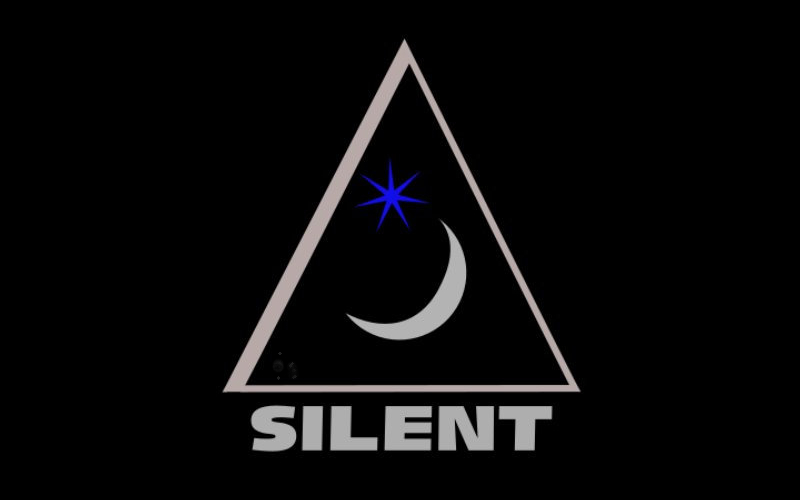



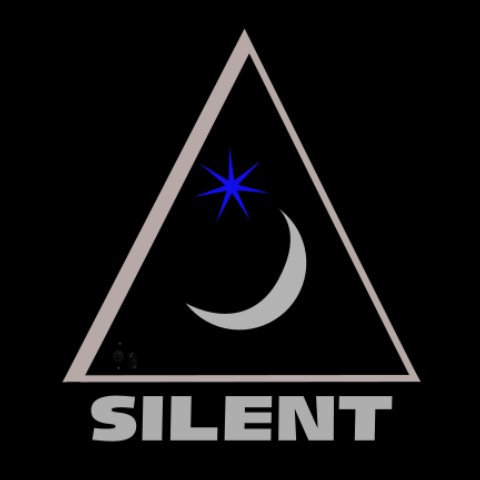


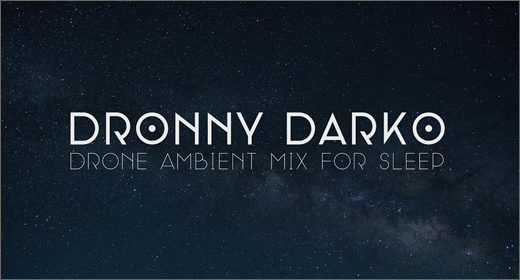


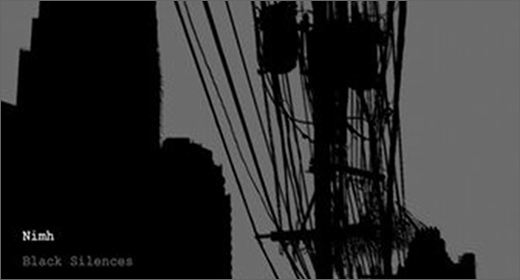








![Romanowitch :: A critical season substitute (glitch.cool) — [concise]](https://igloomag.com/wp/wp-content/uploads/2025/03/romanowitch-a-critical-season-substitute_tape_feat-75x75.jpg)

